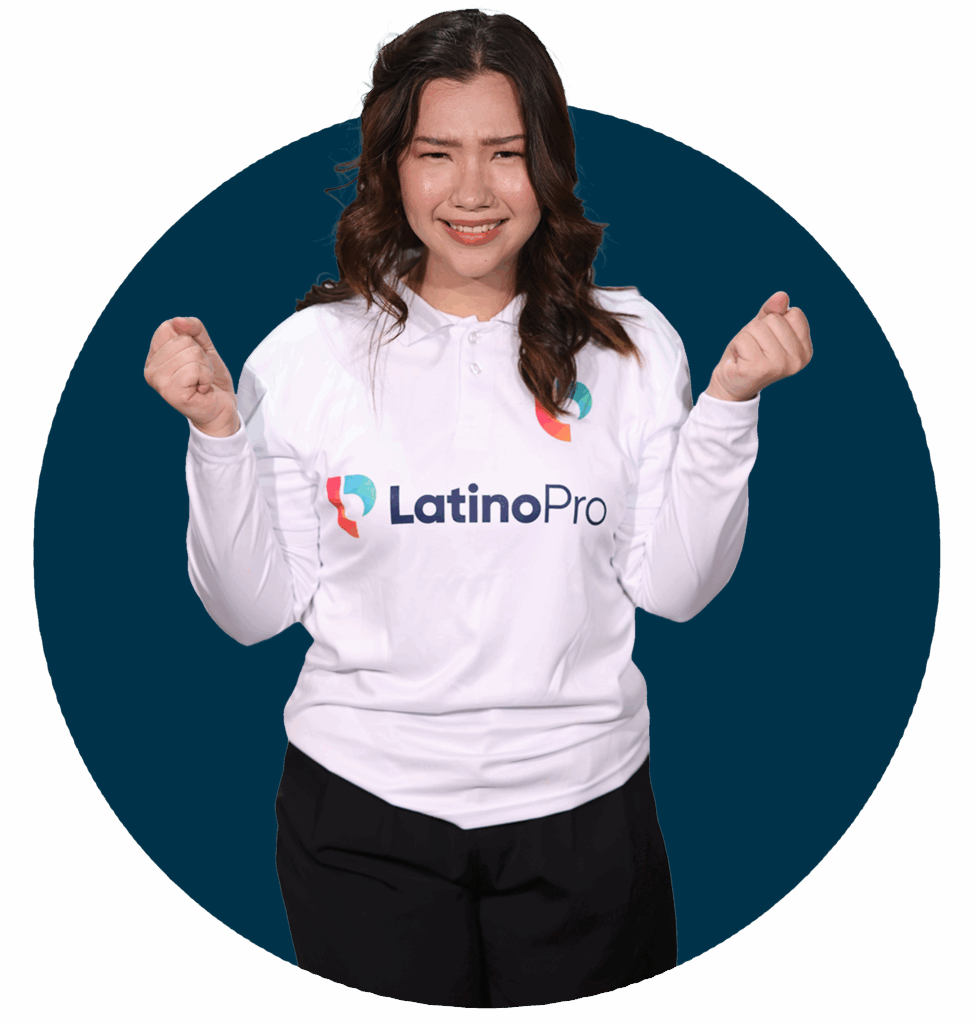
If you’ve Ever Wondered How to Free Up 5–10 Hours A Week Without Dropping Quality, and still protect your client’s best interest, a legal research assistant might be the answer.
A legal research assistant is the person who digs through statutes, pulls key cases, summarizes what matters, and handles intellectual property concerns so you don’t have to, letting you begin focusing more on client strategy.
This guide shows you how to hire, train, measure, and get real results for your law firm, legal team, and even when working with a director or virtual legal assistants who specialize in legal research, legal documents, and legal practice.
Think of a legal research assistant as the person who turns a mess of cases, statutes, and notes into a clean, actionable memo. They search legal research databases, track changes in law, draft short memoranda, prepare legal documents, and flag precedents that matter, especially in addressing legal and intellectual property concerns. They also keep track of deadlines, organize citations, and manage legal documents within document management systems that help the legal team and the organization maintain accuracy and quality.
(Quick Proof Point: Many job boards and hiring pages show thousands of open roles and templates for this position a sign this role is widely used by law firms, courts, and attorneys. Law students often discover that serving as a legal research assistant is an entry-level role where they gain knowledge and practical legal work experience.)

Small and mid-size law firms often face a choice: pay a partner to spend hours on legal research or hire a specialist who does it faster and cheaper. The numbers back this up the Bureau of Labor Statistics reports a median annual wage for paralegals and legal assistants of $61,010 (May 2024) and projects modest employment growth over the next decade. That means many firms still rely on skilled support roles to stay efficient.
The key benefits for lawyers and attorneys include saving billable time, improving legal briefs, strengthening overall legal representation, and ensuring proper handling of intellectual property matters. For employers, this form of delegation helps enhance legal operations, reduce compliance risks, and deliver better legal services to clients.

Keep it specific. List the day-to-day tasks (case law research, statute tracking, memo writing, drafting legal briefs), required tools (document management systems, legal databases, correspondence platforms), and the output you expect (timed memos, citation-checked briefs).
Include a short “Success Metric” section e.g., “Produce a 1-page issue memo in under 3 hours; maintain 98% citation accuracy.” That small clause filters for operators, not just résumés. (Many hiring guides and templates follow this exact format to help law firms and legal teams.)

Make sure to include educational requirements such as a bachelor’s degree in law or a related field, or equivalent experience. Some employers also accept law students or those with a university background in a related field of legal studies.
Day 1–3: Introductions, tools, and access — walk through your database workflows, digital filing platforms, and citation style.
Week 1: Shadowing — assign two small legal research tasks and review together.
Week 2–4: Increasing responsibility — give a short motion research task with a deadline; provide feedback on tone, brevity, and writing skills.
Ongoing: Weekly check-ins and quarterly skills tests (writing sample + citation audit, including intellectual property issues).
Short, frequent feedback beats occasional long reviews. New hires learn fast when they see your standards applied to their legal work and documents.
Firm: Rivera & Solis, a 6-attorney litigation boutique (hypothetical example)
Problem: Partners were spending ~12 hours/week on preliminary legal research for new matters.
Solution: Hired one full-time legal research assistant at $28/hour.
Results After 3 Months:
This case study illustrates how even small gains in time reallocation can quickly offset the cost of a dedicated hire for legal research and legal documents.
These tasks help ensure the candidate has the ability to handle crucial information, maintain quality, and enhance success in a law firm setting.
Create a shared “Research Brief” template: facts, issues, key cases, quotes, citation snippets, and a quick recommendation to develop better consistency across tasks. Teach them to use Boolean and fielded searches, filters for jurisdiction, and how to log deadlines.
Well-trained assistants enhance legal workflows by using records management systems to handle legal documents, correspondence, and court filings. This provides better solutions for both attorneys and clients.
|
Month |
Memos Completed |
Avg Hours Per Memo |
Citation Accuracy (%) |
|---|---|---|---|
|
Jan |
18 |
3.2 |
95 |
|
Feb |
21 |
3.0 |
96 |
|
Mar |
20 |
2.8 |
97 |
|
Apr |
22 |
2.6 |
96 |
This data demonstrates the measurable impact of strong legal research processes and consistent review of output.
Hourly works best for variable workflows. Flat project fees fit well for defined legal research tasks (e.g., “Prepare legal documents or court filings on employment precedent $X”). Retainers make sense for ongoing support (e.g., 20 hours/month at a discounted rate). Some law firms even offer direct deposit for full-time roles to maintain consistency and attract candidates with a bachelor’s degree in a related field such as law or intellectual property.
Law school job boards, paralegal forums, and law firm staffing sites are good starting points. Many firms also recruit from public sector job postings, university job boards in Washington, and bar associations. Employers often look for bachelor’s degree holders in a related field, but aspiring lawyers can also gain valuable experience.
The U.S. Bureau of Labor Statistics notes a median annual wage for paralegals and legal assistants of $61,010 (May 2024), and projects modest employment growth over the next decade useful points when justifying budget lines for support staff. This aligns with overall labor market data showing steady demand for legal research and legal documents expertise.
This template ensures your legal team can submit work quickly, maintain quality, and provide clients with crucial information and actionable insights.

A well-trained legal research assistant isn’t just an expense they’re a force multiplier. With the right job description, a short onboarding plan, and clear metrics, you can reclaim partner time, speed up case prep, and improve accuracy across matters.
By leveraging virtual legal assistants, modern records management systems, and trained staff with a bachelor’s degree in a related field, your law firm can enhance legal workflows, maintain compliance with regulations, and provide higher-value legal support to clients.
A quiet brilliance unfolds as you step into this blog — like opening a window to a calm, sunlit morning where each idea arrives with purpose and grace. Every article feels like a conversation with a trusted guide, gently helping readers rediscover the art of working smarter, not harder.
Venture further, and you’ll find content tailored to both the seasoned entrepreneur and the rising virtual professional. From legal offices to real estate teams, each post offers insight crafted with experience, care, and a deep understanding of what modern work truly needs.
Remote work has changed the world. Companies can now hire skilled workers from anywhere. But in the last few years,
What is an ER Scribe? A Complete Guide to Emergency Room Documentation and Virtual Scribes An ER scribe is a
How Do Document Review Specialists Virtual Assistant Operate In Law Firms How Do Virtual Assistant Document Review Specialists Work Within
Why Virtual Legal Assistants Important In Law Firms Why Virtual Legal Assistants Important In Law Firms The new legal environment
Executive Administrator vs Executive Assistant What's the Real Difference? Understanding the roles of an executive administrator vs executive assistant, often
The Practical Guide for Busy Lawyers, Law Firms, and Virtual Legal Assistants If you’ve Ever Wondered How to Free Up
Administrative Assistant Hard Skills Administrative Assistant Hard Skills: What Do You Need To Know? Administrative assistant hard skills, technical abilities,
Legal Assistant Certification Legal Assistant Certification: Is It The Correct Move For Your Career? Legal assistant certification program is a
Virtual Assistant for Lawyers The Complete Guide to Hiring a Virtual Assistant for Lawyers If you’re interested in the legal
Outsourced Legal Intake Outsourced Legal Intake: Why A Legal Intake Specialist Matters For Law Firms The first impression legal matters
Accounting Interview Questions And Answers Accounting Interview Questions and Answers: How Can You Prepare Effectively? Starting a career in the
Top Legal Outsourcing Companies: Your Friendly Guide To Smart Legal Support Ever find yourself staring at a mountain of legal
Remote Legal Assistant Jobs: Find, Qualify & Thrive in Law Finding remote legal assistant jobs today is both promising and
Real Doctors Note Example Authentic Real Doctors Note Example: What You Need to Know Need a real doctors note example?
Paralegal Assistant Jobs Why Are Paralegal Assistant Jobs So Critical in Today’s Legal Landscape? IntroductionLooking for insights into paralegal assistant
Blueface Looks Shocking New Photos from Prison Go Viral Blueface’s new prison photos reveal a dramatic transformation, shocking fans with
Elon Musk Quotes: Inspiration, Meaning, and How to Apply Them in Real Life The tech visionary Elon Musk is known
What Is an Intake Specialist at a Law Firm The Unsung Hero of Every Law Firm Picture this: Someone’s had
Virtual Legal Assistant Services Virtual Legal Assistant Services: Save Time, Cut Costs, and Scale Your Firm If evenings and weekends
Legal Assistant vs Legal Secretary Legal Assistant vs Legal Secretary: What’s the Real Difference? Choosing between a legal assistant vs
Legal Assistant Training Is Legal Assistant Training The Best Way To Begin Your Legal Career? The focus key phrase “legal
Transcription and Translation What Is the Difference Between Transcription and Translation? Many people confuse transcription with translation, especially when they
Care Coordinator vs Case Manager Care Coordinator vs Case Manager: What's the Difference? If you've been wondering how a care
Case Management Software for Government: Features & Benefits Government solutions that replace paper and spreadsheets with auditable workflows, citizen portals,
How To Become A Legal Transcriptionist How to Become a Legal Transcriptionist: Your Step-by-Step Guide If you've ever asked yourself
Legal Transcriptionist Work Legal Transcriptionist Work: How to Build a Rewarding Career If you’ve ever wondered what it’s like to
Virtual Legal Assistant Benefits: How VAs Save Time, Cut Costs & Boost Billable Hours If you’re running a law firm
Cristiano Ronaldo Injury Update Recovery Timeline, Match Outlook & Digital Health Support Football fans, sports media readers, and healthcare professionals
What Is a Legal Intake Specialist What Is a Legal Intake Specialist? In the intro, let's define what is a
How Do I Become a Legal Transcriptionist? A Practical Guide If you’re here wondering, “How do I become a legal
Attorney vs Lawyer Key Differences and How a Virtual Legal Assistant Can Help The debate over attorney vs lawyer has
How to Say Hi in Spanish Essential phrases for greeting people in Spanish Master essential Spanish greetings and learn when
Remote Medical Interpreter Jobs: Everything You Need to Know Finding remote medical interpreter jobs can feel like navigating a maze—especially
Legal Intake Specialist Job Description Legal Intake Specialist Job Description: What Does the Work Entail? If you're searching for an
Paralegal Assistant Salary in 2025: What You Need to Know Knowing how much a paralegal assistant salary earns in 2025
Remote Paralegal Consultation Top Remote Paralegal Consultation Services for Law Firms Are you wondering how remote paralegal consultation can benefit
What Does It Take to Be a Legal Assistant? 7 Key Steps & Skills Becoming a stellar legal assistant or
How Legal Consultation Can Assist In Insurance Claims How Legal Consultation Can Help in Insurance Claims If you ever had
Legal And Administrative Assistant Top 5 Essential Skills for a Legal and Administrative Assistant Career Thinking of becoming a legal
Virtual Case Manager Jobs Virtual Case Manager Jobs: What Should You Know Before Applying? If you're searching for virtual case
Can a Legal Assistant Become a Lawyer? Definitive Guide Can a legal assistant become a lawyer? For many paralegal professionals,
How to Become a Legal Assistant How to Become a Legal Assistant: Your Step-by-Step Career Guide If you're wondering how
What Does Contingent Mean In Real Estate What Does Contingent Mean in Real Estate? A Clear Guide for Buyers and
Accounting Virtual Assistant Salary Accounting Virtual Assistant Salary: Here's What You Must Know In today’s competitive business environment, many US
Operations Assistant Salary Operations Assistant Salary in 2025: Career Outlook, Pay Trends & Job Security If you're considering a operations
Top Healthcare Outsourcing Companies In The US Top Healthcare Outsourcing Companies in the US: Who Leads the Industry Today? In
What Do Real Estate Virtual Assistants Do? What Do Real Estate Virtual Assistants Do? Essential Tasks You Need to Know
What Does a Medical Scribe Do? Understanding the Role in Today’s Healthcare System If you’ve ever asked, what does a
What Does Good Customer Service Mean to You What Does Good Customer Service Mean to You: Key Insights Good customer
Executive Assistant Duties: The Ultimate 2025 Guide As organizations navigate an increasingly complex business landscape, executive assistants (EAs) with expertise
How to Become a Social Media Manager How to Become a Social Media Manager in 2025 (Step-by-Step Career Guide) In
What is a Case Manager What is a Case Manager: A Complete Guide to Their Role and Impact When life
Marketing Assistant Job Description Marketing Assistant Job Description: The Ultimate Guide A well-crafted marketing assistant job description is the foundation
Bilingual Virtual Receptionist A Smart Move for a Diverse Business Landscape A bilingual virtual receptionist can help your business connect
Appointment Setter vs Sales Representative What’s the Real Difference? In the world of sales, roles can blur. That’s why many
Administrative Virtual Assistant Duties Administrative Virtual Assistant Duties: The Ultimate Guide In a fast‑paced business landscape, every minute counts. Enter
What Are Virtual Receptionist Jobs? A Complete Guide In an era of remote work and on‑demand customer service, virtual receptionist
Legal Assistant Interview Questions Legal Assistant Interview Questions: What Should You Expect? Legal assistant interview questions can make or break
A 2025 Guide to Understanding This Virtual Legal Role When the headline “Todd Chrisley prison sentence” first broke, fans of
The Complete Guide to Virtual Receptionist Appointment Scheduling In today’s always-on world, missing a single client phone call can mean
Virtual Scribing Hire a Virtual Scribe for Better Patient Care Virtual or digital scribing provides real-time documentation support for healthcare
Executive Assistant Job Description Executive Assistant Responsibilities — 10 Core Duties & How to Master Them “An executive assistant (EA)
Efficient Project Management With Virtual Assistants Efficient Project Management with Virtual Assistants: 2025 Insights If you’re juggling multiple deadlines, stakeholder
0perations Assistant Work Master Operation Assistant Work Today Easily A Virtual Operations Assistant ensures your business moves forward efficiently by
Jams Launches Peanut Butter and Jelly Athlete-backed Jams takes on the peanut butter and jelly market amid the protein craze
The death of Andrea Gibson Celebrated Poet and Performance Artist Leaves a Lasting Legacy Celebrated poet and performance artist Andrea
Virtual Assistant for Lead Generation How a Virtual Assistant for Lead Generation Elevates Your Sales in 2025 Have you ever
Legal Assistant and Paralegal: What You Need to Know Choosing between a legal assistant and paralegal can feel daunting—after all,
What Is Paralegal? A 2025 Guide to Understanding This Virtual Legal Role Blue-collar work roles, such as paralegals and legal
What Does a Virtual Operations Assistant Manager Really Do in 2025? In today’s remote-first business world, staying organized in your
Virtual Assistant For Accountant Virtual Assistant for Accountant: Your 2025 Guide to Growing Smarter, Not Harder If you’re an accountant
Want to Work in Law Without Becoming a Lawyer? Here's the Truth About How to Become a Paralegal If you
Todd Chrisley Trump’s Hollywood-Style Pardon: Did Todd Chrisley Buy Freedom With Fame and Politics? When former President Donald Trump pardoned
Todd Chrisley Legal Assistant Trump’s Chrisley Pardon Sparks Outrage: Is Justice Only for the Famous? The Chrisleys are back in
Pardoned or Privileged? The Todd Chrisley Saga Sparks Debate on Justice and Influence In a move that has ignited both
What is a Legal Case Manager What Is a Legal Case Manager? Role, Salary & Hiring Guide 2025 Have you
What Is Legal Assistant A Guide for Law Firms and Legal Professionals As the legal industry changes with technology, law
Paralegal vs Legal Assistant What’s the Right Legal Career Path for You? If you’re interested in the legal field but
Paralegal vs Legal Assistant What’s the Right Legal Career Path for You? If you’re interested in the legal field but